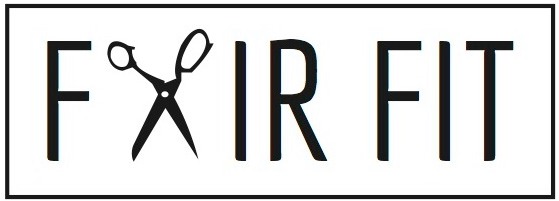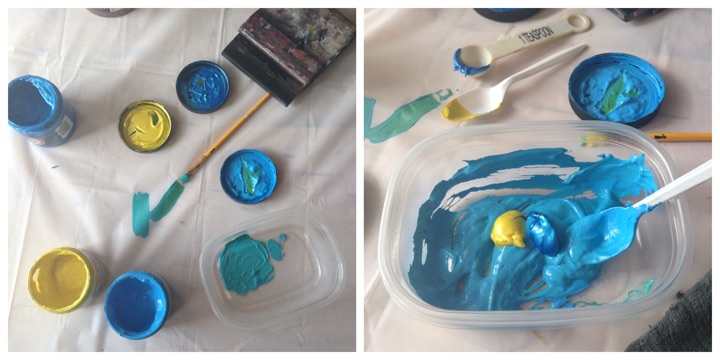Can't Find the Fabric You Had in Mind? Learn How to Make your Own
I've been designing my own wall coverings this past year. Its a part of my surface design practice that I have been developing that mixes the Fair Fit sewing process with quilting and patchwork. If you have taken a class with me, you may have seen these texture and color experiments on the walls.
Andrea's kitchen wall. The photo is not what's creating the pixilation, its the layers of fabric that are solid and transparent that is creating the effect.
Here is an example of a wall I made for my kitchen. I used fabric that I had dyed and printed for previous projects. The idea was still in development, and while I was working with a specific color palate, I was not customizing the fabric for the wall. With this new project, I want it to have the look of repurposed wood, so I am going to need to do some printing.
When I was growing up, my father loved barn boards. Our family room walls were paneled with this reclaimed and repurposed wood. I kind of like to think of my fabric walls the same way, that I'm repurposing the textile scraps from my clothing collections and creating an original wall covering from patchwork pieced in kaleidoscopes of color.
For this project, I wanted to create a wood like fabric wall covering. I'm not going to go buy wood fabric, I am going to print it. Check out my process and see if it peaks your interest in custom fabric design.
The best thing about having the ability to make my own printed textiles is because I can customize the color. What I like to do is start with a small amount of the inks first, and see the mixing ratios. Then, I make a bigger batch of it. Remember it best to start with small amounts to add to your mix, and then keep adding as you go. You can't work backwards and if you add too much you have to add a lot more to compensate and that wastes your ink.
Its important to note that I'm not using a traditional silkscreen process. I use a thermofax machine to create 8.5 by 11 screens of the design that I want to print. In my Print and Patch workshop, I will teach you how to make this type of screen for your original design or drawing, which is what you see here.
The thermofax makes everything so much easier, and it allows me to do silkscreen work in my own home. For years, I had a whole room dedicated to silkscreen and my diy set up just sucked up space and not to mention time. For every screw up I had making a screen, I lost a day of production. The thermofax saved me and my business, and I can't wait to teach you more about it. It's the best option for textile and surface designers who don't want the hassle of having to go to another studio or space to get their printing done.
I print patch after patch of my wood print. And I made the wood print in different textures too. The process is fast, you just have to make space for all that cloth to dry as you go along. Since I'm using an acrylic ink, it will dry much more quickly than my other process of direct application dyes. Its important to go fast to keep the screen ink wet and printable. Otherwise, it clogs up the screen.
Heres the final result! Next week, I will show you the patching process and soon will show the finished product. This is a time consuming project that I have to take on in bite sized bits. My final wall will probably take 3 weeks to finish, but the result is so worth the time.
Do you want to make your own printed cloth for clothing that you make or for interior projects like mine? Take my workshop and you can make your own custom pieces and enjoy the freedom of knowing you can make just what you had in mind.









